Posted by Elena del Valle on September 19, 2011

Getloaded.com Spanish language website – click to enlarge
Photos: Formula PR Inc.
In the United States, 8.9 million people are employed in trucking-related jobs; of those nearly 3.5 million are truck drivers, according to Truckinginfo.net, an online portal for the trucking industry established in 1995. The portal’s Trucking Statistics page indicates there are 15.5 million trucks in the United States; one of every nine of the truckers is independent and the majority are owner operators.
Executives at Getloaded, an internet freight matching service, and PM Publicidad Partners, an advertising and marketing services company, believe there are many bilingual and Spanish dominant people among the 370,000 Hispanic truckers nationwide. This past July, they launched Getloaded.com/espanol, a Spanish language version of the main Getloaded website, hoping to capture their attention.
“Getloaded prides itself on innovation and we’re excited to expand our services to include a Spanish-language, cutting edge platform to better support our clients as they seek to grow their business and avoid ‘deadhead’ miles,” said Jon Stier, director of sales and marketing, Getloaded.

Jon Stier, director of sales and marketing, Getloaded
According to promotional materials, users of the new website will have access to the full functionality of Getloaded, including unlimited load searching and truck posting, freight holder credit scores, immediate notification when loads match their search criteria, and routing and toll information. Ten percent of the employees at Getloaded are Hispanic.

Eduardo Perez, president, PM Publicidad
“From the research results, we have concluded that while the majority of Hispanic truckers are bilingual, they seek and prefer resources in Spanish,” said. Eduardo Perez, president, PM Publicidad. “The project was a transcreation of the English site with the aim to make it relevant for the Hispanic consumer. It was important to us and Getloaded that it wasn’t simply a translation of the English version.”
In making the decision to transcreate all 30 pages of their website into Spanish they relied on the Newport Communication 2005 Latino Truckers Survey which estimated that Hispanics represent approximately 25 percent of the owner and operator trucking segment in the United States. Also, PM Publicidad conducted ethnographic interviews and a quantitative survey to learn more about the profile of the Hispanic trucker.
Posted by Elena del Valle on September 13, 2011

HispanicMPR.com podcast player
To mark its six anniversary HispanicMPR.com, an online forum and audio podcast for the exchange of information and ideas on business and Hispanic market topics for middle to senior executives, announced the top 25 interview podcasts downloaded in 2010.
The most downloaded podcast interviews of 2010 are, in descending order: Rupa Ranganatan (2007), John Mayerhofer, Laura Hernandez, Michele Valdovinos, Jaime Suchlicki, Ph.D., Matias Perel, Cynthia Nelson, Daniel Ayala, Carlos Santiago and Derene Allen, Derorah Ramirez, Martha Montoya, Liria Barbosa, Jose Reyes, Demian Bellumio, Mabel Valdiviezo, Teresa Iglesias Solomon, Maria Azua, Edna Chun, Ph.D., Carlos Alfaro, Antonio Otalvaro and Noah Otalvaro, Steve Bergsman, Gail Mills, Federico Subervi, Ph.D. and Diana Rios, Ph.D., Cynthia Hudson, and Kathleen Haley.
A comprehensive list of podcast guests beginning in 2006 may be found at https://www.hispanicmpr.com/podcast-list/
Started as a weblog for the Hispanic Marketing & Public Relations book (Poyeen Publishing, $49.95), HispanicMPR.com provides news and information and expert audio interviews. Visitors may sign up for regular email updates, search the website for Hispanic market information; and listen to podcasts on the website’s audio player or download them to their MP3 or iPod players. More information on HispanicMPR.com is available online at https://www.hispanicmpr.com
Posted by Elena del Valle on August 31, 2011

Mercadito Midtown
Photos: TransMedia Group, Mercadito Midtown
Earlier this month, Rock Hard Taco, a Mexican cuisine restaurant with a So-Cal style atmosphere, opened in Boca Raton, Florida (scroll down for the Rock Hard Taco Mahi Mahi Tacos recipe courtesy of Rock Hard Taco). Not too far south in Miami Mercadito Midtown serves creative Mexican cuisine, especially tacos.
The Mercadito restaurant and its sister properties specializing in Latin American cuisine are owned and operated by Mercadito Hospitality, a company that has grown from a first New York City location in 2004 to four restaurants. The company, owned by Alfredo Sandoval, Felipe Sandoval and Patricio Sandoval, has a second restaurant in New York and one Chicago.
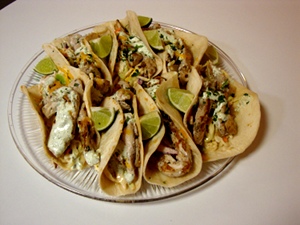
A dish at Rock Hard Taco
What down economy? You wouldn’t know there is a stagnant economy in the country by watching this company’s growth. Mercadito Hospitality, which also owns and operates Double A, an exclusive cocktail lounge next to Mercadito in Chicago, plans to open Tavernita, a second Chicago restaurant, this summer and a second one in Miami this fall. Company executives believe their success can be attributed to the innovative interpretations of traditional Mexican cooking of Chef Patricio Sandoval, and the complex flavored beverages on offer.
At the same time that ethnic food restaurants gain popularity nationwide (see Hispanic, Asian foods booming ) the popular food truck movement in urban areas and television cooking programs nationwide may be the continuing catalyst for at home trial of ethnic foods. It seems there is room for growth in varied ethnic food types, according to Ethnic Foods U.S. January 2011, a Mintel (a research company) survey released earlier this year.

Carnitos Tacos at Mercadito Midtown
The more consumers are exposed to foreign cultures and cuisines the more likely they may be to try preparing some of those dishes at home, especially this year when many families are eating at home frequently due to increases in unemployment and related issues. Mintel analysts believe consumers preparing ethnic foods at home are more likely to be of a nationality or heritage different than that of the food type they are preparing.
For example, although less than 65 percent of the population is Italian 65 percent of survey responders said that they prepared at least one Italian meal at home in the past month. Similar percentages were evidenced for other ethnic foods: Mexican (60 percent), Chinese (42 percent), Spanish/Tapas (17 percent), Japanese (16 percent), Greek (12 percent), Indian (13 percent ), Thai (12 percent), and Korean (8 percent).
Rock Hard Taco Mahi Mahi Tacos
Posted by Elena del Valle on August 24, 2011
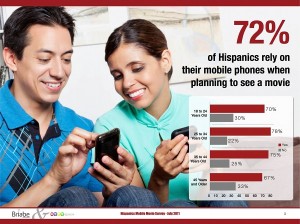
The Mobile Consumer slide – click to enlarge
Photos: Briabe Mobile
A recently released report indicates mobile phones may play a significant role for moviegoers, especially Hispanics. According to the study results, Hispanics attend movies more frequently than other ethnic groups (these findings second those of a Nielsen study indicating Hispanics represent 28 percent of moviegoers), and many may be using their mobile devices to find theaters, movie times and reviews. The report found that 75 percent of Hispanic respondents said they go to the movie theater once a month, and 25 percent said see movies three times a month.

James Briggs, chief executive officer, Briabe Mobile
“This report proved to be a treasure trove of relevant information for both the entertainment industry and marketers, as it highlights numerous opportunities for deploying mobile strategies to successfully get Hispanic moviegoers into theaters,” said James Briggs, chief executive officer, Briabe Mobile.
Seventy-two percent of Hispanic respondent said they use their mobiles to make movie plans; 39 percent view trailers; 35 percent use it to discover movies; 28 percent find reviews; 14 percent buy tickets; and 55 percent use their phones to access movie information within the four hours just prior to seeing a movie, making the survey analysts believe the best time to approach Hispanic mobile phone users is within four hours of the start of the movie.

Justin Siegel, chief executive officer, MocoSpace
“Hispanics are some of the most highly engaged mobile consumers in the country,” said Justin Siegel, chief executive officer, MocoSpace. “This is why we’ve seen a consistent six-year increase in ad budgets for films and DVD releases shifting towards mobile, with campaigns specifically targeted at the mobile Hispanic consumer.”
The Mobile Consumer: Hispanics, Movies & Mobile, the mobile phone survey from MocoSpace and Briabe Mobile, was conducted June 2011 among 1,130 people including 425 Hispanic survey respondents. Briabe Mobile is a multicultural marketing agency and MocoSpace is a mobile entertainment website.
Posted by Elena del Valle on August 10, 2011

Border wall at Buenos Aires National Wildlife Refuge, Arizona
Photos: Matt Clark, Border Patrol, Gerald L. Nino, U.S. Fish and Wildlife Service, Tom Smylie, Miguel de la Cueva
There are 368 miles of border between the country of Mexico and the State of Arizona. The federal government has already built 306 miles of fence along that border, 123 miles of pedestrian fence and 183 miles of vehicle fence. Per the Secure Fence Act of 2005, the federal government has already completed almost all of 651 miles of border fencing that were planned.
This fencing doesn’t include 82 miles of open border in Arizona, according to Patdollard.com. At the same time almost one third of the 1,950 miles of U.S. Mexico border lie within military, tribal, and public lands such as wilderness areas, national wildlife refuges, national forests, national monuments, state parks and hundreds of miles of national park lands (see Border Legislation, http://www.defenders.org/programs_and_policy/policy_and_legislation/border_legislation.php).
The cost of building a border fence on the U.S.-Mexico border ranges between $1 million per mile at its most affordable to as much as $15 million per mile, according to the Government Accountability Office (see Arizona seeks donors for border fence, Bloomberg News).

A Border Patrol agent sits next to an improvised fence seeking protection against rocks thrown from the Mexican side of the border
Feeling vulnerable by the three-hundred sixty-eight mile divide and fearing an “invasion” lawmakers in Arizona passed a law to raise as much as $50 million from private donors to build a border fence with inmate labor support. Build the Border Fence is the state’s fundraising campaign led by Senator Steve Smith and signed into law by Governor Janice K. Brewer with an effective date of July 20, 2011.
As of this writing, the campaign website hosted at Arizona’s Official Web Site, buildtheborderfence.com, lists 2,610 visitors and donations of $118,790. The website indicates that “The border fence constructed in Yuma, Arizona successfully thwarted 93 percent of all illegal crossings in that area. This proves that fences do in fact work!” It also states that “There have been over 35,000 deaths and murders along the U.S. Mexican border since 2006.” No sources for the data are included.

The U.S. Mexican border, Mexico is on the right side of the photo
There are two main sections that need fences in Arizona, Mathew Benson of the governor’s office explained by phone. A Yuma section which has proven to be effective and a Tucson section which only has vehicle barriers and needs reinforcement of “secure fencing” with an approximate cost of $3 million per mile. He was unaware of the number of miles of fence planned or the timeline for the project. He pointed out that the timeline would relate directly to the amount of money raised by the campaign.
“The word of people who live on the border,” Benson said when asked what information the state relied on to launch the campaign. “There is continued traffic of human traffickers and drug smugglers. It is a continuing issue. It is a difficult thing to get a figure for because it occurs in the shadows.”
The immigration numbers are down since the economy is down, he indicated. He also said that the number of illegal immigrants decreased in the Yuma section of the border since the federal government erected the fence.

A jaguar, one of the species affected by the border fence
Some believe America’s southern border is safe and well guarded. A July 25, 2011 The Washington Post article concludes: “Like it or not, the border is a much safer and better monitored place than it has been in many years, and the trend lines promise more of the same (see Illegal immigration is way down and falling fast).” In addition to skepticism from those who believe the fence’s role in controlling illegal immigration is unproven and uncertain (see Noborderwall.com and Sierra Club Borderlands Campaign http://arizona.sierraclub.org/conservation/border/index.asp) there are those concerned about the environment. In Arizona, the Border Patrol estimated that 39 species protected or proposed to be protected under the Endangered Species Act are affected by its operations (see Wildlife and Border Policy, http://www.defenders.org/programs_and_policy/habitat_conservation/federal_lands/border_policy/index.php).
Defenders of Wildlife and the Sierra Club challenged the “short-sighted decision to build a wall through the San Pedro NCA, which is one of the American Southwest’s most unique and biologically diverse areas” in 2007. Defenders of Wildlife, dedicated to the protection of all native animals and plants in their natural communities, has more than 900,000 members and activists. The Sierra Club is one of America’s oldest, largest and most influential grassroots environmental organizations.

Matt Clark, southwest representative, Defenders of Wildlife
“The news is not good for wildlife. (There is) not only a loss of habitat but also wildlife fragmentation (disconnected pieces, wildlife corridors that were affected by the wall). I don’t think the state should be proud of this program because of the extensive damage that it will do to the environment and wildlife,” said Matt Clark, southwest representative, Defenders of Wildlife by phone. “At the end of the day it’s a lose lose for the environment. The state should use inmate labor to take down the damaging sections of the wall.”

Mobility of ocelots in the fenced areas may be affected
Clark, coauthor of an article about the impact of the fence on area wildlife, explained that among the fauna affected are endangered and rare species like jaguars and ocelots (see Rare ocelot photographed near Sierra Vista, thrilling scientists by Tony Davis, Arizona Daily Star February 10, 2011) which have been sighted in Arizona as well as more common ones like mountain lions. He is concerned that by interrupting animal corridors and disrupting habitats the fence may affect genetic diversity and in the cases of rare animals with small populations lead to inbreeding (see United States border fence threatens wildlife by Melissa Gaskill).
“It’s a very good question and one we’re working on right now,” said Jose Viramontes, spokesperson, southwest region of the U.S. Fish and Wildlife Service by phone in response to a question about the impact of the federal fence on wildlife in the region and specifically in Arizona. “We actually are experiencing cross border migration among species that we know occupy the area. Fences in general are not good for wildlife.”
Posted by Elena del Valle on August 3, 2011

Carlos Santana at Casa Noble
Photos: Casa Noble
A family distillery that manufactures Single Estate Organic tequila exported to 23 countries has teamed up with Carlos Santana to further its reach. The famous musician became part owner and board member of Casa Noble and will use his name to promote the tequila brand with 60 percent of its worldwide sales in the United States.
Although the details of the deal were not made public plans are in place, HispanicMPR.com was informed by email, to promote the brand through public relations strategies and social media. The owners, the Hermosillo Family, will be working personally with Santana around his concerts and directly with accounts and distribution to generate interest and awareness about Casa Noble.
“We also plan on creating an event where Carlos will participate and can have direct contact with Casa Noble fans. We want to let everyone know that the passion that he has for his music translates to the passion we all have for Casa Noble,” said Jose Hermosillo, chief executive officer, Casa Noble.
To date Casa Noble has relied on print media efforts to reach its target audience divided evenly between genders mainly in Mexico and the United States. Executives at the company are believers in community outreach, tastings and special events. The company has offered Fine Tequila Tastings in many areas in United States and Mexico. The Casa Noble brand has been represented in events such as the launch of Rolls Royce Fantom in the United States, the Guggenheim Aztec Exhibition, and Virgin Galactic party in Los Angeles, California.
“We have come together because I love the Tequila,”said Santana in a press release. “Passion, dedication and integrity is what attracted me to Casa Noble Tequila. I feel at home with my new family at Casa Noble. They strive for excellence and don’t take shortcuts. Just like the music of Santana, one note or one drop… they are the same thing. You have to feel each note from your heart. Casa Noble and my family have the same origin, Jalisco, Mexico. My family roots date back to the 1700’s in Jalisco. My father is a Huichol Indian. When I visited the distillery, I immediately felt spiritually connected to the Hermosillo family and Casa Noble. Together we celebrate the gift of life and all of the blessing that come with it. Together we can all make a difference in the world.”

Jose Hermosillo, CEO, Casa Noble
“Of course, Hispanics are a very important segment for us, they know tequila and enjoy hi(gh) quality tequila and are willing to pay more for it,” said Hermosillo when asked about the importance of the Hispanic market.
Casa Noble representatives have been in attendance at consular events in Washington, D.C. and Dallas and Latino leader events. The company has a Spanish language website and Spanish language point of sale materials in Hispanic areas of the country.
“Santana’s love for the spirit of Casa Noble and his commitment to this new partnership is exciting for everyone involved with our brand. Santana’s personal philosophy of quality and integrity in the pursuit of perfection is synonymous with the Casa Noble brand of fine ultra premium Tequilas. The linkage between Casa Noble and Carlos Santana will create broader recognition that Casa Noble’s triple distilled, organically certified tequila is truly one of the finest ultra premium spirits,” said Hermosillo.
“We have been exploring this partnership for some time. This is a natural synergy; Casa Noble Tequila is deeply rooted in the pursuit of quality, craftsmanship and tradition. Santana through his life and his music has dedicated himself to those same values which are the key motivators behind this alignment.”
Casa Noble tequila is made in Mexico and has a Denomination of Origin (like wines) which specifies that it can only be produced in the state of Jalisco and parts of four other states. The company, now owned by the Hermosillo Family and Santana, has its distillery in the City of Tequila, Mexico and offices in Guadalajara, Mexico as well as in the United States. Its Asia base is in Singapore and its Europe base is in Germany.
Casa Noble tequilas, Crystal, Reposado, and Añejo, are made with blue agave, estate grown, picked and harvested by hand. After harvesting the plant is cooked in a traditional stone oven, leading to a natural fermentation and followed by distillation in traditional pot stills. After aging in French white oak the tequila is hand bottled at the estate. Santana has sold 90 million records and reached 100 million fans at concerts worldwide. The musician has won ten Grammy Awards, including a record-tying nine for a single project.
Posted by Elena del Valle on August 1, 2011

AARP Retirement Calculator in Spanish – click to enlarge
Photo: AARP.org
In October 2010, the American Association of Retired Persons, known more commonly as AARP, launched a retirement calculator as a retirement planning tool for its members. To date about one million people have made use of the online calculator. There are one million Hispanic AARP members among the organization’s 37 million members. Since older Hispanics are among the fastest growing segments of older people nationally it makes sense to target them.
Some believe reaching out to them in Spanish is a good way to do so. Earlier this month, AARP announced the launch of an online Spanish-language version of the original retirement calculator targeting some of the nine million (according to Diversitycentral.com) older Hispanics at aarp.org/calculadorajubilacion.
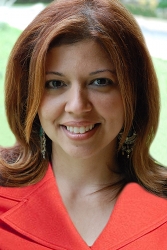
Rocky Egusquiza, vice president, Multicultural Markets, AARP
“With the launch last year of our bilingual Web site, Hispanics and Latinos 50+ have grown to expect high-quality content and trusted information from AARP,” said Rocky Egusquiza, vice president, Multicultural Markets, AARP. “This calculator continues to build on that promise and gives our growing Hispanic audience another tool to plan for their retirement security for themselves and for their families.”
According to AARP promotional materials, “Research has shown that using a tool like a retirement calculator can help people focus on the steps many need to take to get their financial lives in order.” The idea the organization’s staff have in mind is for users to rely on the AARP Retirement Calculator to evaluate their situation and figure out how to reach their retirement goals.
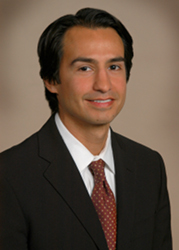
Andres Castillo, senior advisor for Education and Outreach, AARP
“For many, the first step to a secure financial future includes assessing when they can retire and what is needed to do so,” said Andres Castillo, senior advisor for Education and Outreach, AARP. “Whether an individual is starting at square one or needs to re-evaluate their original plans, the AARP Retirement Calculator is a tool that can help them determine where they stand and what they need to do next.”
The new calculator features a narrative, step-by-step design that AARP marketers expect will find the same popularity as the English language calculator has had to date. “We would hope, percentage-wise, that usage would mirror the English-language calculator,” said an AARP spokesperson.
At the end of the process users will be guided to additional AARP tools and resources about Social Security, financial planning and other aspects of retirement. The organization for retirees relied on its findings from a January 2010 survey by AARP, in collaboration with the National Hispana Leadership Institute and impreMedia to launch the AARP Spanish language Retirement Calculator. The survey was to a nationally representative general sample of 1,002 adults ages 45 and older and a targeted sample of 400 Hispanics ages 45 and older.
AARP, a nonprofit, nonpartisan organization targeting people fifty years of age and older for membership, produces AARP The Magazine with a circulation of 35.1 million. It also publishes AARP Viva, a bilingual U.S. publication targeting older Hispanics.
Posted by Elena del Valle on July 26, 2011
Summary:
The Marketing Communications Department operates as an “in-house” agency creating and implementing content and creative for all marketing and sales support programs. The ideal candidate will have at least seven years experience in a marketing and communications role, preferably in non-profit or services. He/she must possess a professional “can-do” attitude and work collaboratively across functional teams.
Click here to read the entire Marketing and Communications Senior Manager
Posted by Elena del Valle on July 11, 2011

P.F. Chang’s at Sawgrass Mall in South Florida, one of many Asian restaurants across the country
Photo: HispanicMPR
Do you feel like having some Mexican food for dinner tonight? How about something Asian or Indian, Creole, Mediterranean or Middle Eastern? If you said yes, you are among a growing number of Americans opting for ethnic meals. In the past five years growth, after inflation, of ethnic foods increased 6 percent. In 2010, ethnic food sales were $2.4 billion. This growth is considered by some researchers healthy for that time period, especially in comparison with other food types.
In addition, sales of ethnic foods may increase 10 percent (or 19 percent without taking inflation into account) in the next five, according to Ethnic Foods U.S. January 2011, a report by Mintel, a research company. Mintel researchers and analysts believe the increase is due to a combination of a diverse population in the United States, a resurgence of home cooking resulting from the recession, bubbling interest in international foods prompted by travel and cooking shows, and increases in ethnic menu items.
Although Mexican/Hispanic food products continue to be the largest segment of the ethnic foods market, accounting for 62 percent of food, drug and mass market sales, this segment only exhibited a 1 percent growth in 2009-10. The second largest ethnic market, accounting for 29 percent of sales, is Asian foods. This segment grew the most between 2009 and 2010, almost 5 percent. In the last five years (2005 to 2010), this market segment increased by 39 percent compared to the rest of the market which grew a modest 13 percent in comparison.
The growth of chain restaurants serving ethnic foods across the United States seems to reflect these trends. For example, late last year there were credible reports that Panda Express, a fast food restaurant chain, planned a 70 percent growth over the next five years, from 1,350 to 2,300. Chipotle, the booming Latino organic fast food chain, also announced plans to open an Asian restaurant similar to the Chipotle model for the second half of 2011. P.F. Chang’s China Bistro owns and manages 200 Chinese American cuisine restaurants nationwide, according to the company website.
Posted by Elena del Valle on June 27, 2011
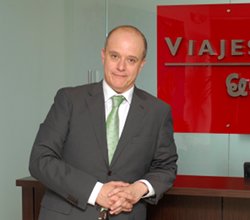
Juan Carlos Basabe, director, International Sales, Viajes El Corte Ingles
Photo: Enrique Tubio
Viajes El Corte Ingles, Inc., the United States arm of El Corte Ingles, S.A., a Spanish travel services company, recently expanded its operations by opening new headquarters in Miami, Florida, and launching tripcruises.com, an English language cruise oriented website.
The company first established operations in the United States in March 1987. In 1997, Viajes El Corte Ingles opened a branch office in Miami to serve clients coming from Spain to Florida and corporate clients already in Florida.
Viajes El Corte Ingles has as many as 25 employees depending on the time of year. The company targets travelers with “medium to high purchasing power,” according to Juan Carlos Basabe, director of International Sales, Viajes El Corte Ingles, who responded to questions by email.
Although decision makers at Viajes El Corte Ingles did not conduct research prior to the recent expansion they relied on their belief that there are “increasing numbers of U.S. visitors to Europe and particularly Spain.”

tripcruises.com homepage – click to enlarge
The company moved its headquarters to Miami this year because of the city’s strong position as a cruise port which was was appropriate for the new website tripcruises.com; to offer its services to the multinational Spanish and European companies with offices in Florida; and because of the “huge Spanish-speaking clientele in Florida.”

































